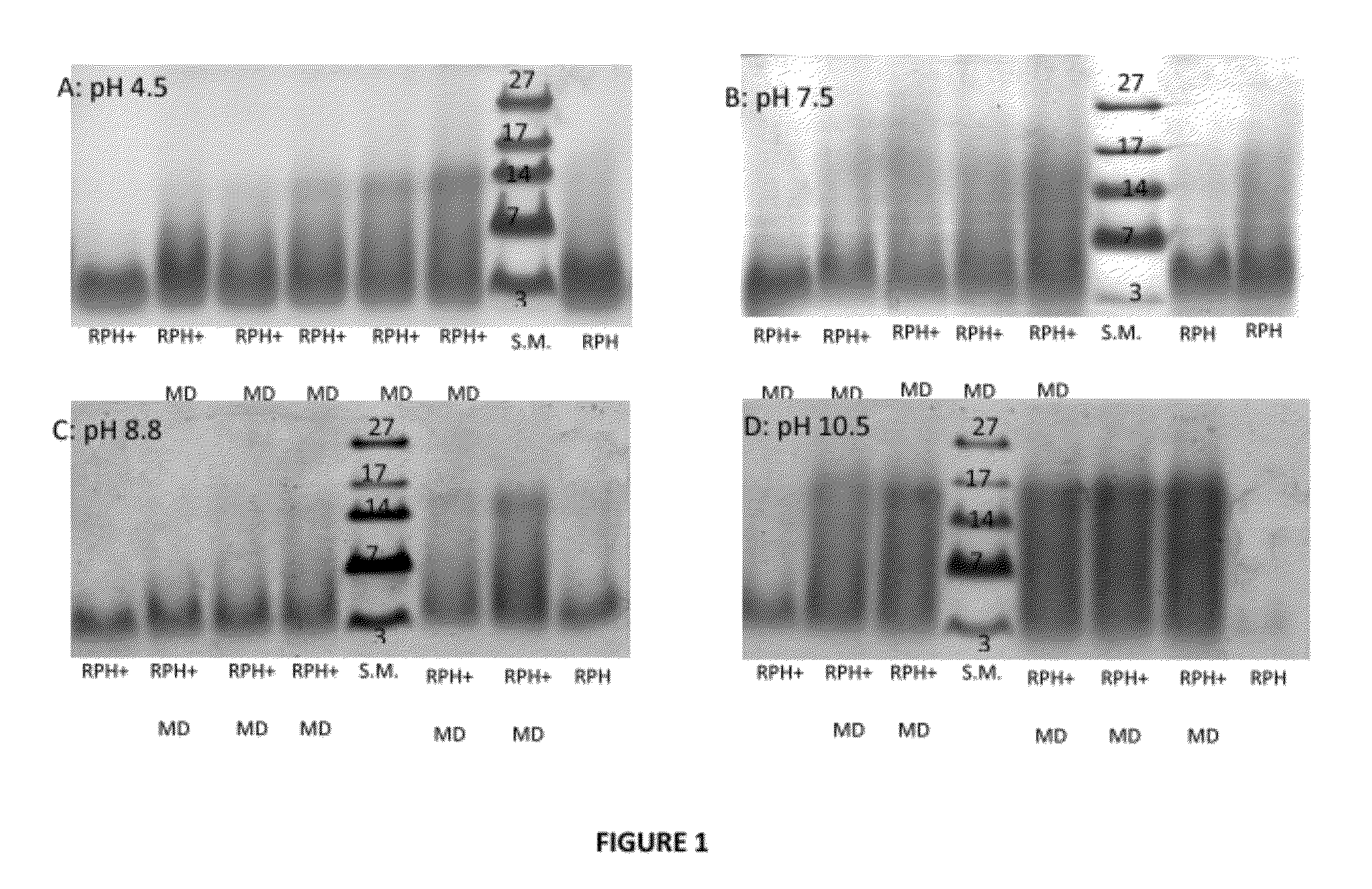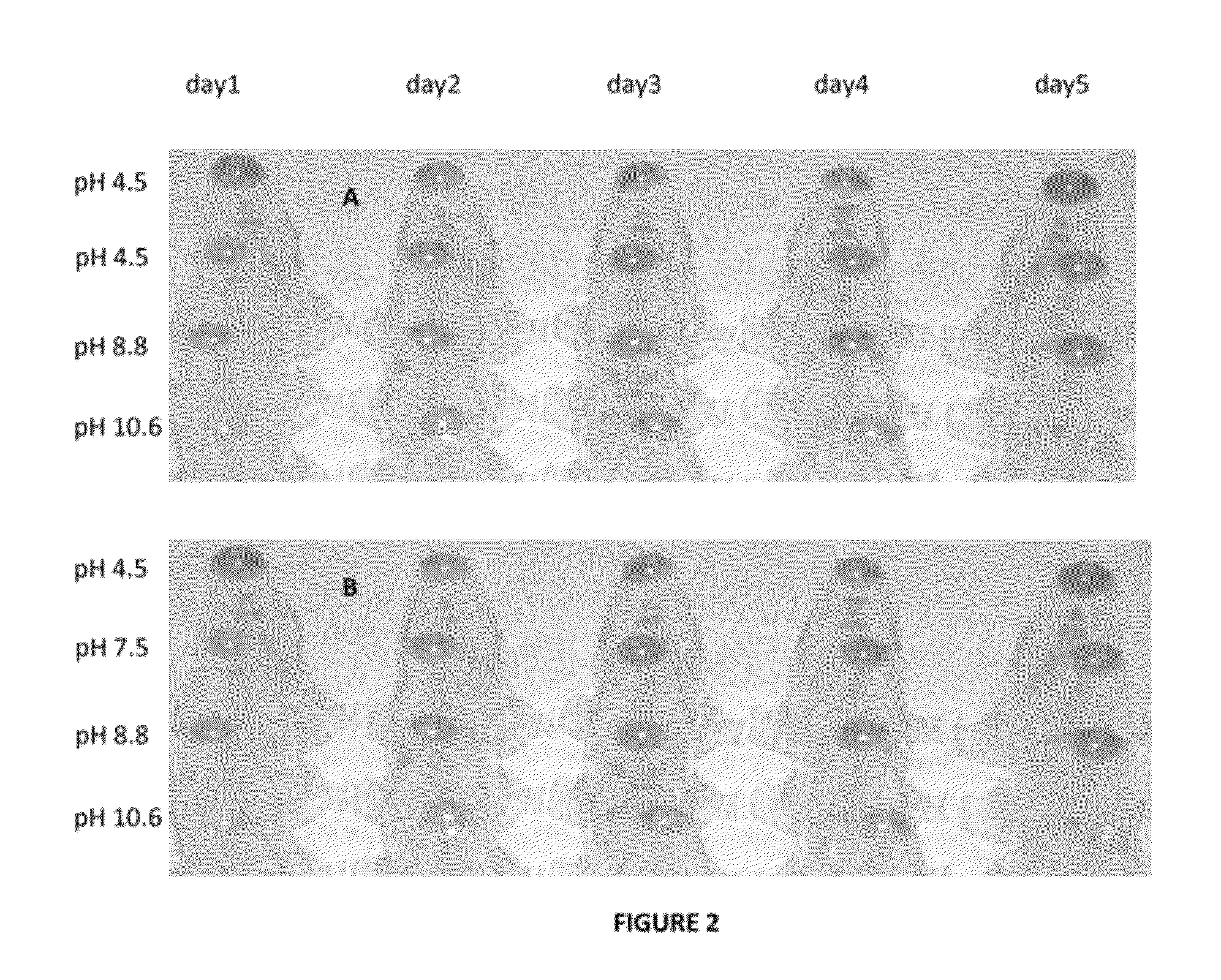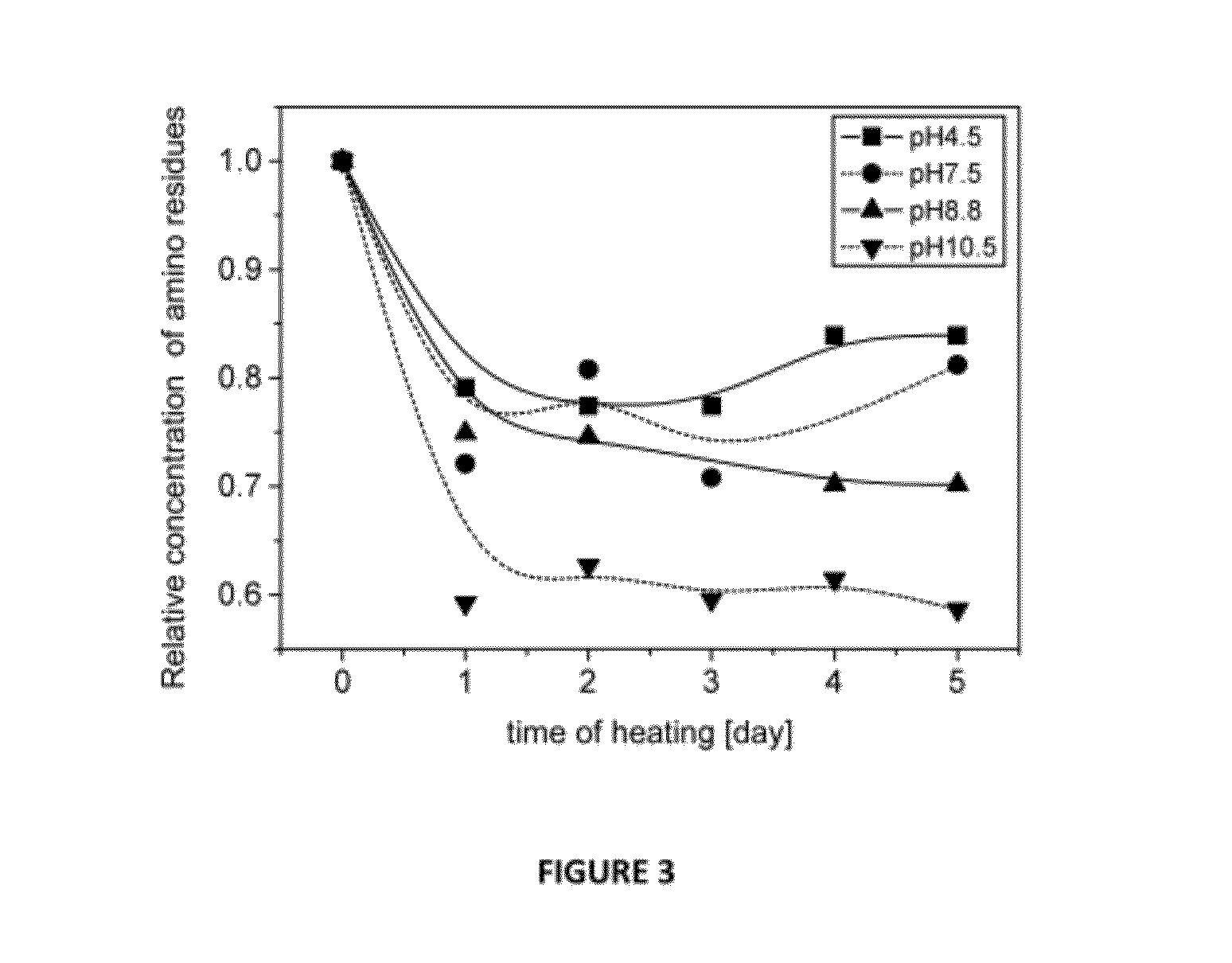Protein-polysaccharide conjugates and use for encapsulating nutraceuticals for clear beverage applications
a technology of nutraceuticals and conjugates, which is applied in the field of protein-polysaccharide conjugates and use for encapsulating nutraceuticals for clear beverage applications, can solve the problems of poor stability of beta casein around ph 4.5-5.5, poor water soluble stability, and limited protection for sensitive hn
- Summary
- Abstract
- Description
- Claims
- Application Information
AI Technical Summary
Benefits of technology
Problems solved by technology
Method used
Image
Examples
example 1
[0193]The Maillard reaction of RPH and MD was examined by SDS-PAGE analysis as a function of time at different pH conditions. For pH 4.5, 7.5 and 8.8, similar progression was observed showing gradual Mw increase of the oligo-peptides species due to covalent bonding with the MD molecules. For pH 10.5, after one day of heating a significant Mw increase was obtained i.e. the reaction rate was the highest at this pH. These results were confirmed by color development studies. The absorbance measurement showed an increase as a function of reaction time at spectral region typical to Millard reaction products. The free amino residues concentration decreased with the Maillard reaction progression as was shown by the OPA analysis. The highest decrease was obtained for pH 10.5 samples in agreement with other methods of analysis. The amino residues content decreased mainly on the first day of heating and then stayed approximately unchanged during the rest of the time.
[0194]The size distribution...
example 2
[0212]These results of this study emphasize the potential of soy β-cong-MD Maillard conjugates as nanoencapsulation material for clear drink applications. The conjugates showed better solubility than the mixture of their components. The conjugates, with and without EGCG gave smaller particle sizes than solutions of MD with and without EGCG. The conjugation apparently facilitated formation of smaller-more soluble entities, with particle sizes that remained below 20 nm after at least 48 hrs from preparation. The protection provided by the conjugate-based nanoparticles to EGCG was more significant than the protection provided by the mixture control sample.
II. Nanocapsules Made of Maillard Reaction Based Conjugates of Milk Proteins and Maltodextrin
Example 3
Casein and Maltodextrin Based Nano Vehicles for Nutraceutical Delivery
[0213]The objective of this part of the study was to form Maillard conjugates of casein and maltodextrin (MD), characterize them and evaluate their potential for na...
example 3
[0267]1. CN-MD Maillard conjugate based nanovehicles for enrichment of HN, having diameters of less than 100 nm, were successfully formed.
[0268]2. The complexes of VD-conjugate were less turbid than the ones formed by VD-mixture, and much less turbid than VD dispersed in buffer only, at the high concentrations studied, simulating soft drink concentrates (Completely clear solutions were obtained with nanoencapsulated VD at doses typical for the final drinks).
[0269]3. The supernatant conjugate can be used for enrichment of clear beverages even at pH close to 4.6 which is the pl of the native casein, where unconjugated casein nanocapsules would precipitate.
[0270]3. Conjugation significantly improved the protection against oxidation conferred to both VD and EGCG.
[0271]4. Conjugation does not significantly change the ability of caseins to bind HN.
[0272]5. Enzymatic hydrolysis by gastric pepsin of the casein was not followed by release of the hydrophobic molecules from the protein. It is ...
PUM
| Property | Measurement | Unit |
|---|---|---|
| particle diameter | aaaaa | aaaaa |
| particle diameter | aaaaa | aaaaa |
| solubility | aaaaa | aaaaa |
Abstract
Description
Claims
Application Information
 Login to View More
Login to View More - R&D
- Intellectual Property
- Life Sciences
- Materials
- Tech Scout
- Unparalleled Data Quality
- Higher Quality Content
- 60% Fewer Hallucinations
Browse by: Latest US Patents, China's latest patents, Technical Efficacy Thesaurus, Application Domain, Technology Topic, Popular Technical Reports.
© 2025 PatSnap. All rights reserved.Legal|Privacy policy|Modern Slavery Act Transparency Statement|Sitemap|About US| Contact US: help@patsnap.com



